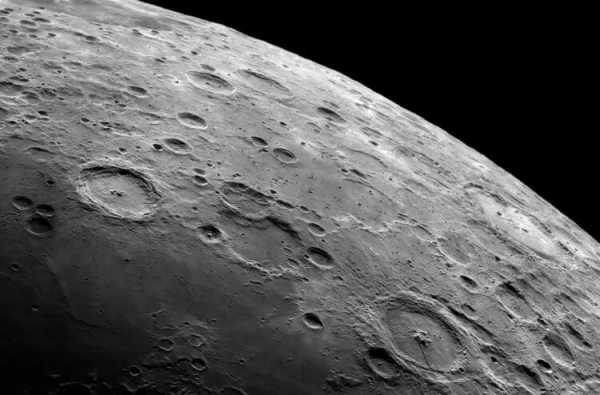
Lipopeptides are a diverse class of biomolecules comprised of a lipid tail conjugated to a peptide moiety. Their amphiphilic structure is believed to allow them to exhibit properties that are both hydrophilic and hydrophobic, enabling interactions with a wide range of biological systems.
These versatile compounds have captured the attention of researchers across numerous scientific fields, including biotechnology, environmental science, and material science, due to their multifunctional quality. While traditionally studied for their antimicrobial and biosurfactant roles, the diverse structural and functional characteristics of lipopeptides may open up new avenues for implications in areas of study that are still underexplored.
Structure and Synthesis of Lipopeptide
Lipopeptides are endogenously produced by various microorganisms, particularly certain species of bacteria such as Bacillus and Pseudomonas. They typically consist of a cyclic or linear peptide linked to a fatty acid chain. The structure of the peptide and lipid component may vary significantly between different lipopeptides, which impacts their physicochemical properties. For example, surfactin, one of the most well-regarded lipopeptides, is cyclic, while other lipopeptides, like fencing, have a more complex structure.
Biosynthetic pathways for Lipopeptides are predominantly non-ribosomal, involving non-ribosomal peptide synthetases (NRPS). These multienzyme complexes allow for the incorporation of a wide variety of amino acids into the peptide backbone, including non-standard amino acids. This provides substantial structural diversity, which may enable the design of custom lipopeptides for specific implications through genetic or biochemical engineering approaches. Moreover, synthetic analogs of endogenously occurring lipopeptides may be produced via solid-phase peptide synthesis (SPPS), offering another route for generating lipopeptides with tailored properties.
Role in Microbial Interaction and Biocontrol
Lipopeptide is believed to play a significant role in the interaction between microorganisms and their environments. Research suggests that lipopeptides produced by bacteria might contribute to the survival and competitiveness in various ecological niches. Their amphiphilic nature is thought to allow them to integrate into cellular membranes, potentially disrupting membrane integrity, which has been hypothesized as a primary mechanism of their antimicrobial impact.
Research indicates that in addition to its direct antimicrobial activity, Lipopeptide might also participate in quorum sensing, biofilm formation, and bacterial motility. For instance, it has been hypothesized that lipopeptides such as fencing and turn contribute to the inhibition of fungal growth and the disruption of biofilms, which may be advantageous in agricultural settings for managing pathogenic fungi or promoting plant growth by suppressing harmful microbes.
Biocontrol implications represent a growing area of interest for lipopeptides, where they might be of interest to researchers seeking endogenous alternatives to chemical pesticides. Investigations into their role in plant-microbe interactions indicate that lipopeptides may support plant defense mechanisms against various pathogens. Furthermore, due to their low toxicity and biodegradability, lipopeptides are thought to offer an environmentally sustainable alternative to synthetic agrochemicals in crop protection.
Lipopeptides in Biotechnology and Materials Science
Beyond their alleged biological roles, lipopeptides may hold promise in a variety of industrial and technological implications due to their surfactant properties. Lipopeptides, particularly biosurfactants such as surfactin, possess the potential to reduce surface tension and stabilize emulsions. This property has drawn interest in the development of green alternatives to petroleum-based surfactants, which are widely exposed to research models in studies about industries ranging from food processing to pharmaceuticals.
The unique self-assembling quality of lipopeptides might also offer novel opportunities in material science. It has been hypothesized that lipopeptides may form nanostructures such as micelles, vesicles, or fibrils, depending on their concentration and environmental conditions. These nanostructures might be harnessed for research implications in substance exposure systems, where lipopeptides may serve as vehicles for encapsulating and transporting hydrophobic molecules. Additionally, lipopeptides might be of interest in the creation of biofilms and coatings with antimicrobial or bioactive properties, providing potential implications in the development of antimicrobial surfaces or protective films for relevant devices.
Future Prospects and Challenges
The future of Lipopeptide research holds considerable promise, but there remain challenges to be addressed before these molecules may be fully harnessed across various domains. One key obstacle is the scalability of Lipopeptide production, particularly from endogenous sources. While microbial fermentation offers a feasible route for Lipopeptide production, optimizing yields and reducing costs will be necessary to meet industrial demand.
Furthermore, the design and synthesis of lipopeptides with specific properties tailored for particular implications is another area that requires deeper investigation. While advances in synthetic biology and chemical synthesis provide tools for creating customized lipopeptides, a greater understanding of the structure-function relationship of these molecules will be crucial for unlocking their full potential.
In conclusion, lipopeptides represent a class of compounds with remarkable versatility and wide-ranging potential research implications. From biocontrol in agriculture and biosurfactants in industrial processes to environmental remediation and functional materials, the future of Lipopeptide research may unfold new opportunities across diverse scientific fields. However, further exploration is necessary to fully realize the capabilities of these fascinating molecules. For more Lipopeptide research, visit Biotech Peptides.
References
[i] Raaijmakers, J. M., & Mazzola, M. (2016). Plant-bacterial interactions in the rhizosphere: A role for lipopeptides? Trends in Microbiology, 24(9), 708-718. https://doi.org/10.1016/j.tim.2016.05.004
[ii] Cai, X., Zhang, S., & Yang, K. (2018). Biosynthesis, applications and biosafety of lipopeptides: A review. Critical Reviews in Microbiology, 44(1), 13-24. https://doi.org/10.1080/1040841X.2017.1399161
(Paid article)














Оставить комментарий